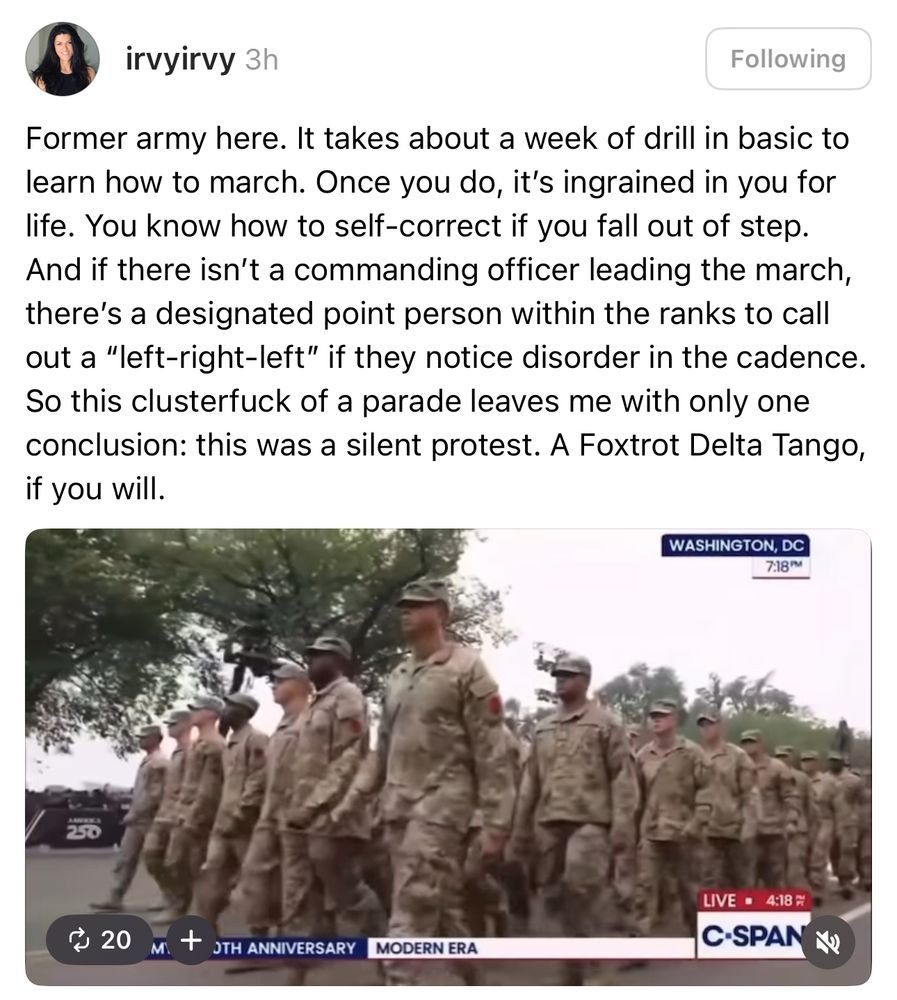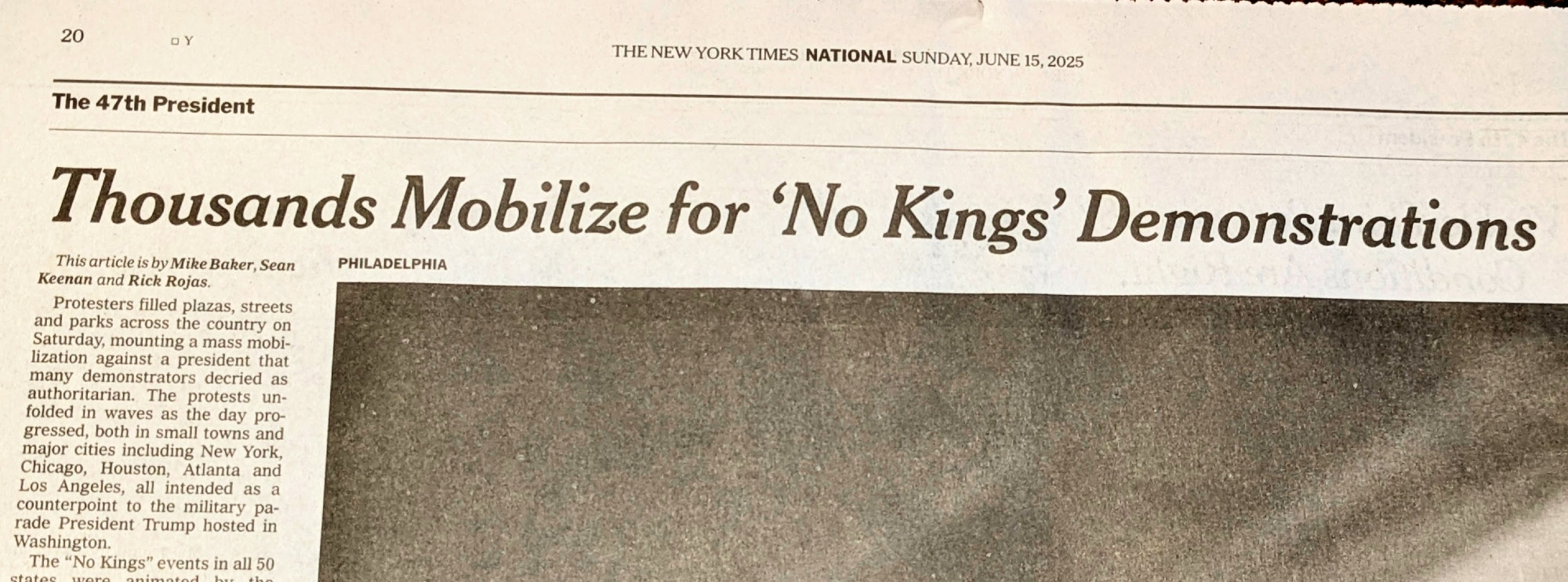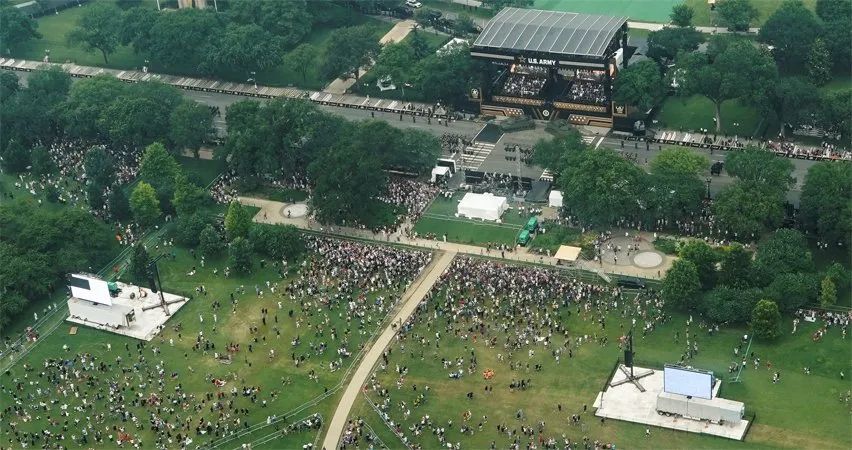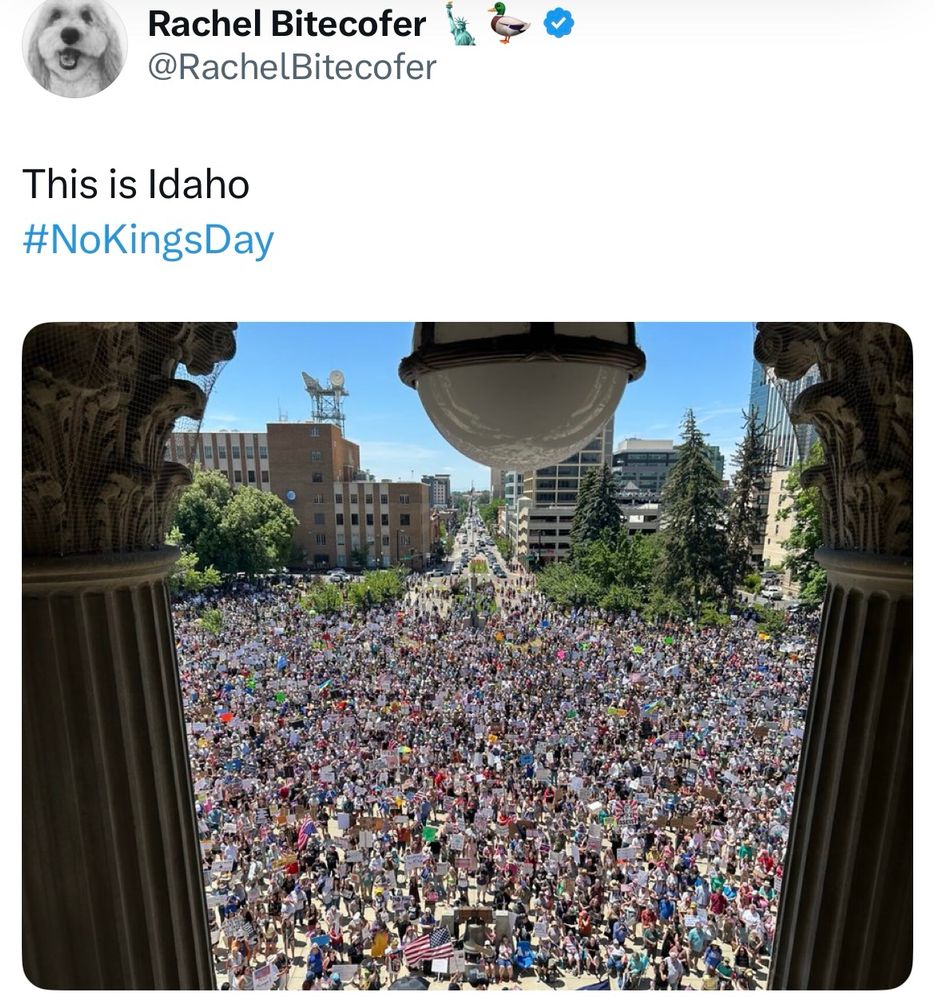Started working on this Saturday evening and soon realized I was going to have way more than a single post’s worth. We’ll be dividing this up into bite-sized chunks over the next few days, but to get it started, here is an overview along with a few articles, quotes, images, general points, and whatever the hell you call tweets on Bluesky.
The 3.5% Rule
This one's been making the rounds for a little while now. It basically says that once you pass a threshold of three and a half percent of the population engaged in non-violent protest, the government in question will fall. Loads of problems with this from a statistical and poli sci standpoint. If you want to get up to speed on the research, this BBC report is recommended.
From a new interview with @chenoweth.bsky.social, who coined the "3.5% rule": "Most of the movements in our database never got to that threshold and still won with like 1.8% or something like that." podcasts.apple.com/us/podcast/t...
— Joshua J. Friedman (@joshuajfriedman.com) June 15, 2025 at 10:04 AM
[image or embed]
While we can go back and forth about the rule itself, Margaret Sullivan's take on the journalistic ethics of downplaying these protests is characteristically solid.
Sullivan wrote her piece a few days ago, before things got really embarrassing for The New York Times, The Washington Post, and the rest. More posts coming on this, but TL;DR:
Genie: ok what do you want for your birthday Trump: a military parade, oh, and also millions of people on the street chanting my name Genie: okie dokie
— Pwnallthethings (@pwnallthethings.bsky.social) June 14, 2025 at 4:40 PM
The protests were historic. The parade was humiliating.
Elliott Morris—who was always good and seems to have gotten even better now that he doesn't have ABC executives looking over his shoulder—has been working with the No Kings numbers and has come to some striking conclusions.
Our unofficial crowdsourced estimate of yesterday’s protest turnout is rising to 4.2-7 million as we gather more data. At this point potentially the second-largest single day of protest in U.S. history! www.gelliottmorris.com/p/no-kings-d...
— G Elliott Morris (@gelliottmorris.com) June 15, 2025 at 10:07 AM
[image or embed]
Morris is one of the best people in the field, and I'm inclined to trust his numbers. But even if he's wrong, we can be fairly certain he did a better job than the paper of record.
(I suppose they didn’t say how many thousands.)
The coverage of the No Kings demonstrations—particularly compared to the far smaller and almost entirely astroturfed Tea Party protests of a few years ago—reveals a double standard that even I find surprising, and this is by no means my first rodeo.
There is no longer ONE WORD about yesterday's MASSIVE protests on the NYT home page. But a whole section about the miserable, misbegotten parade. SHAME!
— Dan Froomkin/Press Watch/Heads Up News (@froomkin.bsky.social) June 15, 2025 at 10:49 AM
[image or embed]
The Tea Party protests in April 2009 had about a third of a million people involved, and the political media treated it like a game changer for the Obama presidency. The No Kings rallies were AT LEAST ten times bigger than the Tea Party protests. Will the press keep pretending Trump is popular?
— Kevin M. Kruse (@kevinmkruse.bsky.social) June 15, 2025 at 7:44 AM
[image or embed]
Originally, even CNN made a point of stressing they were a Fox News stunt and then just absorbed their self serving stories bsky.app/profile/csha...
— Kevin M. Kruse (@kevinmkruse.bsky.social) June 15, 2025 at 8:05 AM
[image or embed]
Why is this piddly-ass parade a two-day story when the most massive protest of the Trump era is a one-day story? (WaPo for instance has 5 parade items on home page, 0 about NO KINGS)
— Dan Froomkin/Press Watch/Heads Up News (@froomkin.bsky.social) June 15, 2025 at 6:53 PM
The New York Times and The Washington Post have also been bending themselves into Gordian knots trying to avoid saying the obvious about Donald Trump's birthday party.
Our military deserves better than this empty charade. Yikes. The tank squeaking over silence is incredible.
— The Tennessee Holler (@thetnholler.bsky.social) June 14, 2025 at 5:37 PM
[image or embed]
You can see my thread on Bluesky comparing the techniques used by The Washington Post to make the parade look well-attened to the low-budget filmmaking tricks of Roger Corman protégés trying to make a dozen extras look like a crowd of thousands.
(NPR had a huge advantage here, since they didn’t actually have to find pictures and could simply misrepresent through audio.)
Perhaps my favorite “Who you gonna believe, me or your lying eyes?” moment came when the news showed clips of soldiers making almost no effort to stay in step. While the voice-overs talked about impressive military displays, the actual visuals suggested soldiers who were either disinterested or were actively looking to show their disapproval.

Corporate America did its part. “Special thanks to our sponsor Lockheed Martin,” the MC said around 6:30 p.m., shouting out America’s biggest defense contractor. The MC later thanked “our special sponsor Coinbase,” the cryptocurrency exchange. President Trump sure loves crypto — he reported in his financial disclosure Friday that he made $57 million in the final months of 2024 after he and his family launched their own crypto exchange, World Liberty Financial. (That was before he launched his own $TRUMP meme coin.)
Around 7 p.m., the big screens onstage that displayed the American flags turned to logos for UFC, the mixed martial arts business. Later, the MC thanked “special sponsor Palantir,” a contractor hired to help Trump compile data on Americans across federal agencies.
More to talk about later, but this should keep you busy for now.



I really want to shake the hand of whoever put "Fortunate Son" on the set list.
ReplyDelete.You reminded me I meant to include this link. MP https://variety.com/2025/music/columns/trump-fortunate-son-creedence-military-parade-draft-dodging-1236432479/
Delete